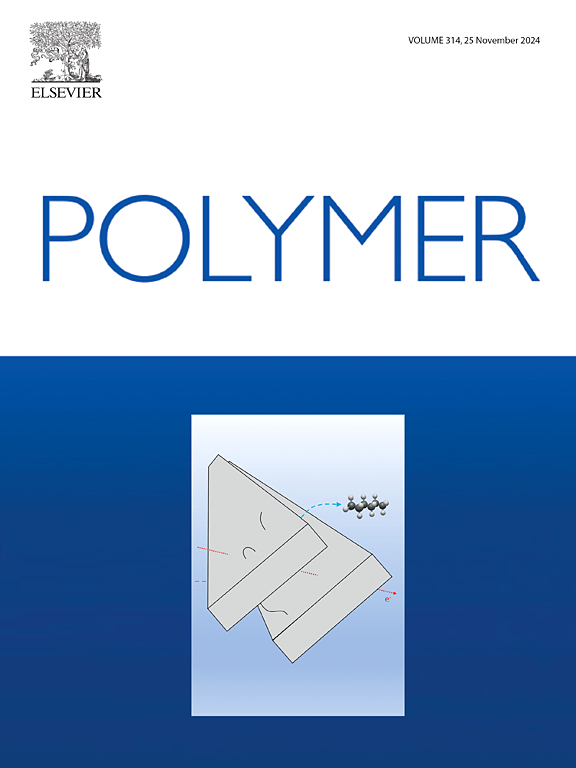Study on electrical performance of nano-silicide filled epoxy resin composite materials
IF 4.5
2区 化学
Q2 POLYMER SCIENCE
引用次数: 0
Abstract
Improving the performance of epoxy resin (EP) for ultra-high voltage electrical equipment has always been a key focus, as breakdown-related accidents often occur. Existing studies have shown that the incorporation of silicides (SiO2, Si3N4, SiC) into EP can significantly enhance its electrical properties. However, there is no clear consensus on the specific filler compositions and their ratios for improving electrical performance. In this study, different nano-silicides are experimentally incorporated into EP. Based on the test results, the nano-silicide with optimal electrical performance is identified. Subsequently, EP composites with varying filler contents are prepared and their electrical properties tested. Finally, a molecular cross-linking model is used to explain the mechanisms by which silicide compositions and filler content effect the electrical properties of EP composites. Experimental results show that, compared with EP, EP composites filled with nano-silicides exhibit a conductivity (σ) and dielectric constant (εr) increase of approximately 50.7 %–65.5 % and 35.1 %–45.3 %, respectively. The dielectric loss tangent (Tanσ) is reduced by approximately 30.2 %–58.7 %, while the breakdown electric field and surface flashover voltage are enhanced by 4.6 %–8.8 % and 3.2 %–11.3 %, respectively. Among the different silicides, the EP/SiC composite demonstrated superior electrical properties compared to EP/SiO2 and EP/Si3N4. The filler content also influences the electrical performance. EP composites filled with 2 % SiC (wt.%) exhibited the best electrical performance, as compared to those filled with 0.5 %, 1.0 %, and 1.5 % SiC. Molecular simulations revealed that SiC nanoparticles provided the most compact internal bonding, the smallest Mean Square Displacement (MSD), and the strongest interface bonding energy of - 3026 kJ/mol with the EP matrix. Additionally, the SiC/EP exhibited the smallest dipole moment and εr. As the SiC content increased, the MSD gradually decreased.


纳米硅化物填充环氧树脂复合材料的电性能研究
由于超高压电气设备经常发生击穿事故,提高环氧树脂(EP)的性能一直是人们关注的焦点。已有研究表明,在EP中掺入硅化物(SiO2, Si3N4, SiC)可以显著提高EP的电学性能。然而,对于改善电性能的具体填料成分及其比例尚无明确的共识。在本研究中,不同的纳米硅化物被实验地掺入到EP中。根据测试结果,确定了具有最佳电性能的纳米硅化物。随后,制备了不同填料含量的EP复合材料,并对其电性能进行了测试。最后,利用分子交联模型解释了硅化物组成和填料含量对EP复合材料电性能影响的机理。实验结果表明,与EP相比,填充纳米硅化物的EP复合材料的电导率(σ)和介电常数(εr)分别提高了约50.7% ~ 65.5%和35.1% ~ 45.3%。介质损耗正切(Tanσ)降低了约30.2% ~ 58.7%,击穿电场和表面闪络电压分别提高了4.6% ~ 8.8%和3.2% ~ 11.3%。在不同的硅化物中,EP/SiC复合材料的电学性能优于EP/SiO2和EP/Si3N4。填料含量也影响电性能。与填充0.5%、1.0%和1.5% SiC的EP复合材料相比,填充2% SiC (wt.%)的EP复合材料表现出最好的电性能。分子模拟结果表明,SiC纳米颗粒与EP基质的内部键合最致密,均方位移最小,界面键合能最高,为- 3026 kJ/mol。此外,SiC/EP的偶极矩和εr最小。随着SiC含量的增加,MSD逐渐减小。
本文章由计算机程序翻译,如有差异,请以英文原文为准。
求助全文
约1分钟内获得全文
求助全文
来源期刊

Polymer
化学-高分子科学
CiteScore
7.90
自引率
8.70%
发文量
959
审稿时长
32 days
期刊介绍:
Polymer is an interdisciplinary journal dedicated to publishing innovative and significant advances in Polymer Physics, Chemistry and Technology. We welcome submissions on polymer hybrids, nanocomposites, characterisation and self-assembly. Polymer also publishes work on the technological application of polymers in energy and optoelectronics.
The main scope is covered but not limited to the following core areas:
Polymer Materials
Nanocomposites and hybrid nanomaterials
Polymer blends, films, fibres, networks and porous materials
Physical Characterization
Characterisation, modelling and simulation* of molecular and materials properties in bulk, solution, and thin films
Polymer Engineering
Advanced multiscale processing methods
Polymer Synthesis, Modification and Self-assembly
Including designer polymer architectures, mechanisms and kinetics, and supramolecular polymerization
Technological Applications
Polymers for energy generation and storage
Polymer membranes for separation technology
Polymers for opto- and microelectronics.
 求助内容:
求助内容: 应助结果提醒方式:
应助结果提醒方式:


